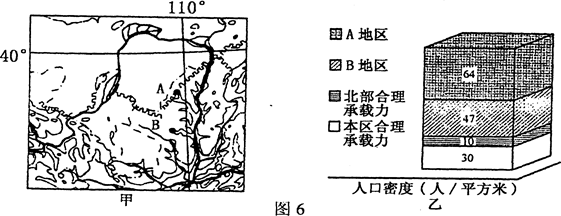Long before Man lived on the Earth, there were fishes, reptiles, birds, insects, and some mammals. Although some of these animals were ancestors of kinds living today, others are now extinct, that is, they have no descendants alive now. (41) . Very occasionally the rocks show impression of skin, so that, apart from color, we can build up a reasonably accurate picture of an animal that died millions of years ago. That kind of rock in which the remains are found tells us much about the nature of the original land, often of the plants that grew on it, and even of its climate. (42) Nearly all of the fossils that we know were preserved in rocks formed by water action, and most of these are of animals that lived in or near water. Thus it follows that there must be many kinds of mammals, birds, and insects of which we know nothing. (43) . There were also crablike creatures, whose bodies were covered, with a horny substance. The body segments each had two pairs of legs, one pair for walking on the sandy bottom, the other for swimming. The head was a kind of shield with a pair of compound eyes, often with thousands of lenses. They were usually an inch or two long but some were 2 feet. (44) . Of these, the ammonites are very interesting and important. They have a shell composed of many chambers, each representing a temporary home of the animal. As the young grew larger it grew a new chamber and sealed off the previous one. Thousands of these can be seen in the rocks on the Dorset Coast. (45) . About 75 million years ago the Age of Reptiles was over and most of the groups died out. The mammals quickly developed, and we can trace the evolution of many familiar animals such as the elephant and horse. Many of the later mammals though now extinct, were known to primitive man and were featured by him in cave paintings and on bone carvings.
[A] The shellfish have a long history in the rock and many different kinds are known
[B] Nevertheless, we know a great deal about many of them because their bones and shells have been preserved in the rocks as fossils. From them we can tell their size and shape, how they walked, the kind of food they ate.
[C] The first animals with true backbones were the fishes, first known in the rocks of 375 million years ago. About 300 million years ago the amphibians, the animals able to live both on land and in water, appeared. They were giant, sometimes 8 feet long, and many of them lived in the swampy pools in which our coal seam, or layer, or formed. The amphibians gave rise to the reptiles and for nearly 150 million years these were the principal forms of life on land, in the sea, and in the air.
[D] The best index fossils tend to be marine creature. There animals evolved rapidly and spread over large over large areas of the world.
[E] The earliest animals whose remains have been found were all very simple kinds and lived in the sea. Later forma are more complex, and among these are the sea-lilies, relations of the star-fishes, which had long arms and were attached by a long stalk to the sea bed, or to rocks.
[F] When an animal dies, the body, its bones, or shell, may often be carried away by streams into lakes or the sea and there get covered up by mud. If the animal lived in the sea its body would probably sink and be covered with mud. More and more mud would fall upon it until the bones or shell become embedded and preserved.
[G] Many factors can influence how fossils are preserved in rocks. Remains of an organism may be replaced by minerals, dissolved by an acidic solution to leave only their impression, or simply reduced to a more stable form.

